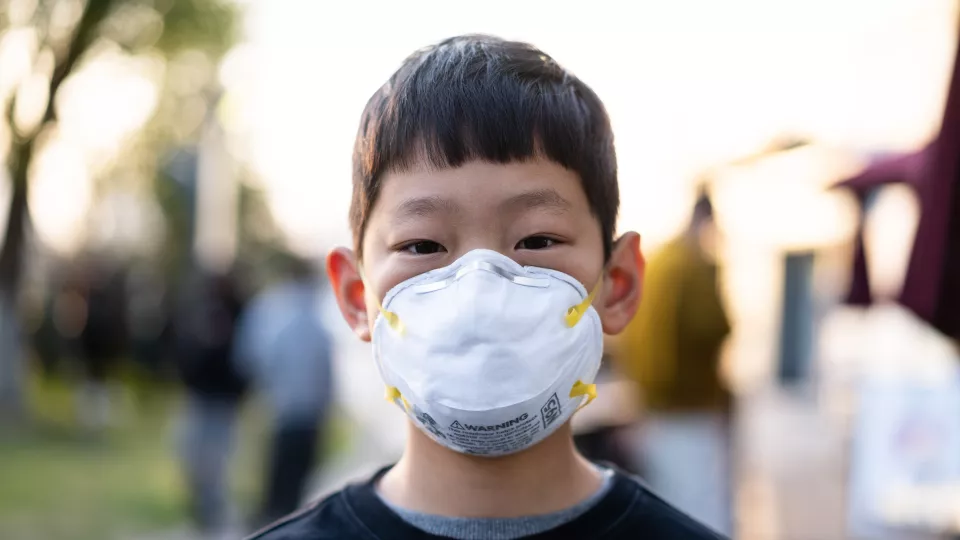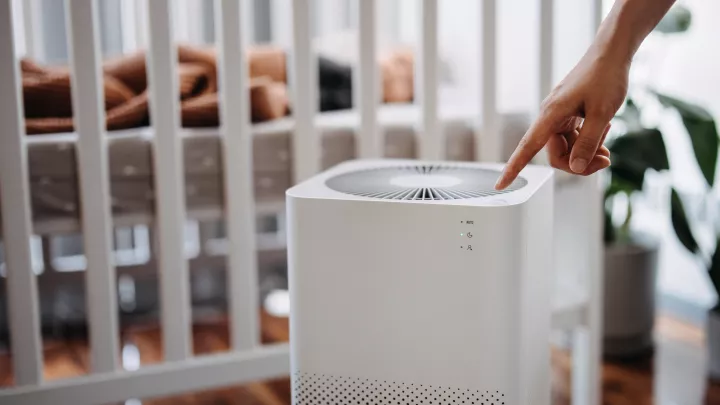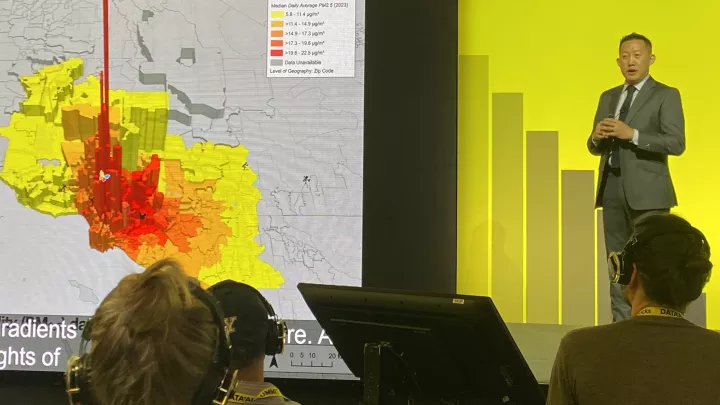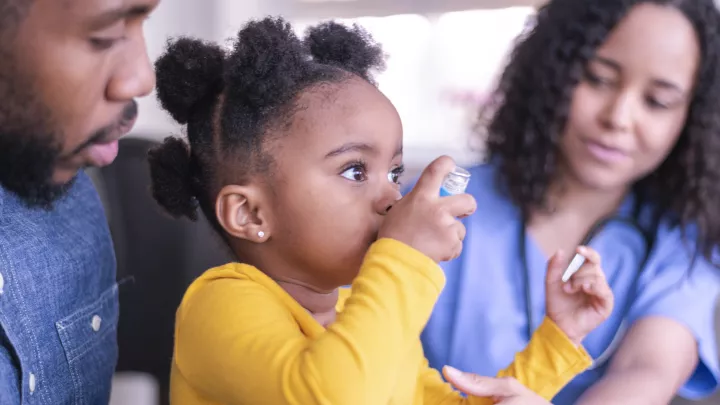
Air Quality After Wildfires: How to Safeguard Kids Long Term
- Know what air quality indexes measure and what they don't.
- Check localized air quality, wind direction, and time of day.
- Well-fitting N95 or KN95 masks help protect kids.
- Encourage consistent mask use during periods of poor air quality
- Limit outdoor exposure to poor air quality when possible.
- Take precautions to lower exposure to dust.
Schools and families are seeking reliable advice on how to protect kids from the poor air quality resulting from the wildfires that devastated swathes of Los Angeles. Jonathan M. Tan, MD, MPH, MBI, Pediatric Anesthesiologist and Vice Chair of Analytics and Clinical Effectiveness, Anesthesiology Critical Care Medicine at Children’s Hospital Los Angeles, studies air quality and children’s health. In this Q&A, he shares guidance on practical steps to protect children.

How does an urban fire differ from a forest fire?
Typically, in forest fires, trees and vegetation burn, but urban fires are significantly more complex. During the January 2025 fires, entire neighborhoods with thousands of buildings were destroyed, alongside trees and vegetation. Urban fires also involve burning materials such as plastics, vehicles, electric vehicle batteries, and hazardous substances like asbestos, which are released into the air as harmful ash. In addition, communities, families, and children were displaced.
What are the potential short-term effects of wildfires on air quality?
Exposure to smoke can lead to a range of health issues such as fatigue, headaches, dizziness, nausea, and irritation of the eyes and skin. Children are especially vulnerable because their bodies are smaller, and their developing physiology makes them more sensitive to these effects. They might experience severe symptoms like coughing, wheezing, shortness of breath, and nasal congestion. Smoke exposure can significantly worsen symptoms of kids with preexisting heart or lung conditions. In cases of asthma, for example, exposure to smoke could trigger asthma attacks or make asthma attacks more severe. Since the short-term effects on children can vary in severity, paying attention to kids' symptoms is important.
What are the potential long-term effects?
High exposure to poor air quality over time can lead to poor lung development in kids and increase the risk of asthma or other respiratory diseases. Children are more likely to have severe heart complications if they have preexisting conditions like congenital heart disease. Aside from affecting the heart and lungs, emerging scientific studies show that poor air quality can potentially impact children’s developing brains. Much more research needs to be done. Meanwhile, it is important to try to minimize short and long-term exposure.
How near must you be to the fire to worry about air quality?
The level of exposure depends on how poor the air quality is, the duration of exposure, wind direction, and other environmental factors. You don't have to be close to fires to be impacted by the health effects of smoke. Studies of other urban fires outside of Los Angeles have demonstrated that exposures to particulate matter and ash from burned homes in wildfires can be found over 10 miles from the original fire.
How does time of day affect air quality?
Wildfires compound the effects of natural variations in air quality throughout the day. Temperature changes and other environmental conditions can worsen air quality throughout the day and night. In addition, the Los Angeles region has a diverse geography and various microclimates. Look for localized air quality information sources when possible.
What apps or websites give localized information?
Government platforms like AirNow.gov, endorsed by the United States Environmental Protection Agency (EPA), are excellent sources for scientifically vetted air quality information. Professionals and researchers also use commercial applications such as PurpleAir and IQAir for real-time, localized air quality updates. While I do not endorse any specific company or provider, I advocate using a combination of reliable sources—both government and commercial—to make informed decisions.
What do air quality indexes measure?
Air quality monitors and websites assess several factors and may combine them into an air quality index (AQI), which typically accounts for pollutants like ozone and nitrogen dioxide. These indexes also measure particulate matter (PM), specifically particles smaller than 2.5 microns (PM2.5) and particles smaller than 10 microns (PM10). The size of these particles determines how deeply they can penetrate the body. PM2.5 is particularly concerning as their small size allows them to infiltrate the lower airways, leading to health issues like asthma, difficulty breathing, severe coughing, and even systemic inflammation. Although PM10 particles are larger, they can still contribute to respiratory problems.
What is not measured by air quality indexes?
Air quality indexes typically do not measure formaldehyde or volatile organic compounds (VOCs), the toxic gases released as buildings and other materials burn. There are ways to measure some of these other harmful pollutants, but this can require more specific and advanced equipment than these publicly available websites currently use.
How can parents and schools protect kids?
Because air quality can change rapidly during and after wildfires, wearing masks during episodes of poor air quality (AQI higher than 100, particularly when PM2.5 levels are high) can help protect children. However, children under two cannot wear masks. Well-fitting KN95 masks on younger children can more effectively filter fine particles from smoke than cloth or surgical masks. N95 masks can also be used for older children and teens, but will not seal properly on small faces. A P100 respirator can provide additional protection for older kids and teens. Particularly during and after active wildfire days, extremely polluted air can seep indoors in older buildings through windows and ventilation systems. In these extreme circumstances, wearing a mask indoors may be a helpful option for children with preexisting conditions or heightened sensitivity to smoke. Parents and caregivers can also teach children how to use air quality index tools to help them understand when to wear masks. Explaining the effects of poor air quality on respiratory health in a child-friendly way can help children understand the importance of protection. Since wearing masks can sometimes be uncomfortable, providing breaks in clean indoor environments with filtered air can help.
How can schools improve classroom safety?
When air quality is bad, schools should keep windows and doors closed to minimize entry of outdoor air. Parents can check with their schools to confirm if classrooms are equipped with air filtration systems, such as HEPA air purifiers, and if the building’s HVAC systems use high-quality filters. It’s important to ask about these measures to ensure a healthier indoor environment for children. Basic steps such as washing hands help reduce exposure to pollutants after being outside.
What about recess?
On days with severe air quality, schools should consider providing alternative indoor activities if possible, such as gym or classroom-based exercises, to keep children active while minimizing exposure to harmful air. Living in a high-risk area, such as Los Angeles during wildfire season, offers an opportunity to teach children and provide them with the tools and knowledge of how to understand and cope with a changing environment.


